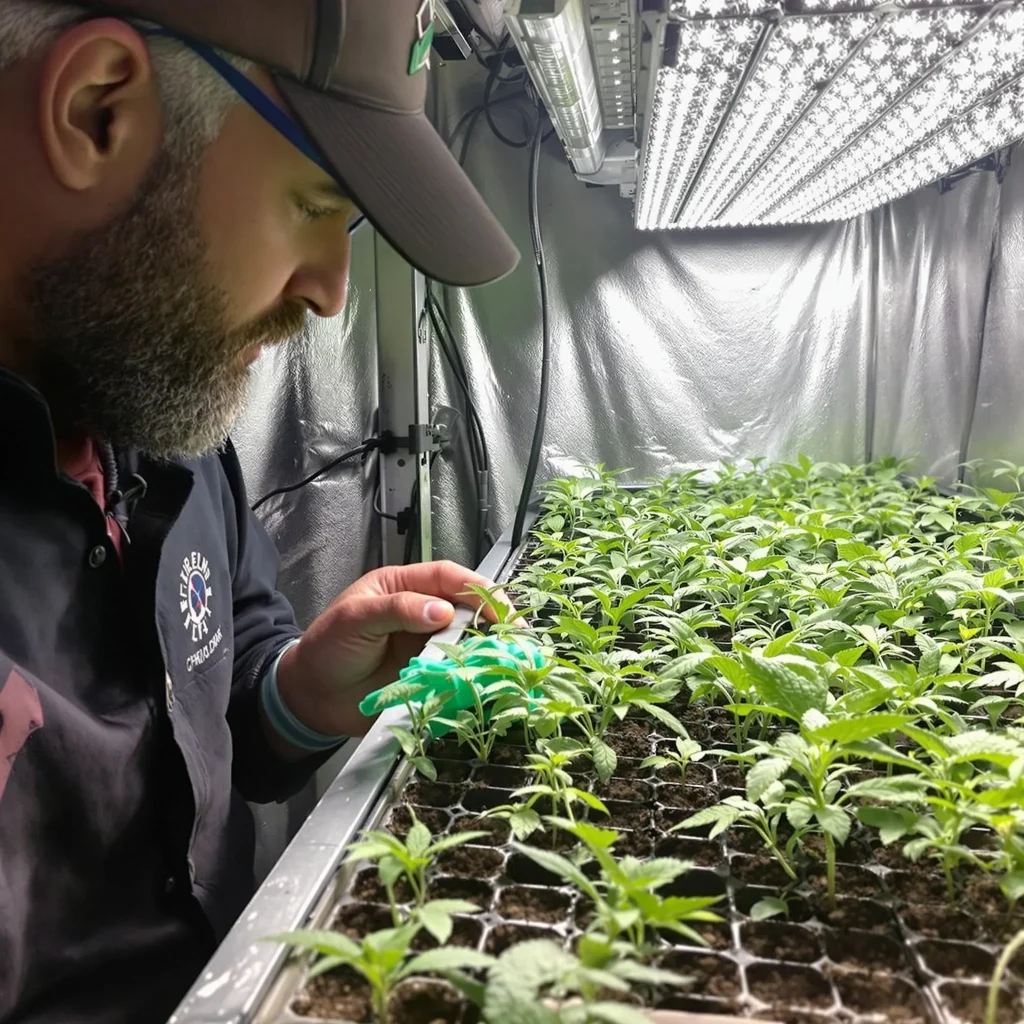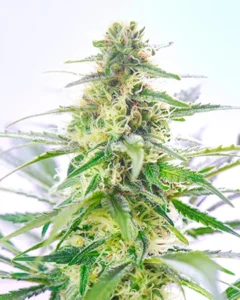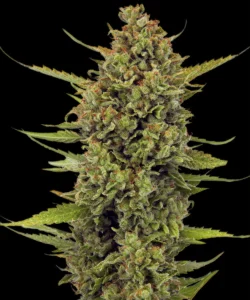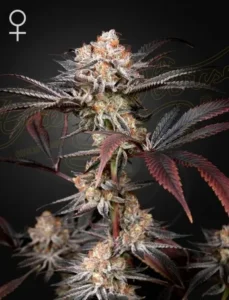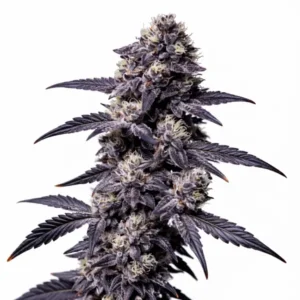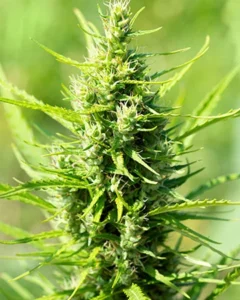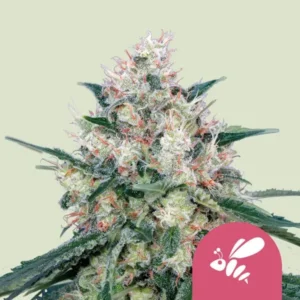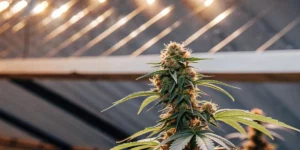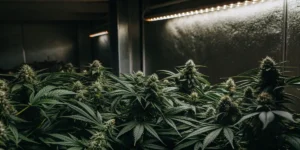Why Dehumidifiers Are Essential for Grow Rooms
Humidity Control in Cannabis Cultivation
Best dehumidifier for grow room is essential for maintaining proper humidity levels for healthy cannabis plants. Excess humidity can lead to mold and mildew, while too little can dry out the plants, causing stunted growth. Dehumidifiers provide precise control over humidity, ensuring optimal growing conditions and preventing environmental stress on the plants.
Controlling humidity also helps cannabis plants absorb nutrients more efficiently. When the air is too moist, the plants struggle to uptake essential nutrients, impacting their overall health and yield. With a dehumidifier, growers can avoid these issues and create a stable environment for robust growth.
Recommended Strains
Tangerine Dream Autoflower
|
|
THC | 24% - 25% (High) |
|
|
Lineage | G13 x Afghani x Neville's Haze x Ruderalis |
|
|
Type | Autoflowering |
|
|
Height | 5.74 ft | 1.75 m |
|
|
Yield | High |
|
|
Yield Indoor | 1.64 - 1.67 oz/ft² | 500 - 510 g/m² |
|
|
Yield Outdoor | 15.87 - 17.64 oz/plant | 450 - 500 g/plant |
|
|
Life Cycle | 9 - 10 weeks |
|
|
Phenotype | 40% Indica / 60% Sativa |
|
|
Effects | Creative, Energetic, Euphoric |
|
|
Flavors | Citrus, Pungent, Sweet |
Acapulco Gold
|
|
THC | 22% - 23% (Medium) |
|
|
Lineage | Central American |
|
|
Type | Feminized |
|
|
Height | 5.74 ft | 1.75 m |
|
|
Yield Outdoor | 52.91 oz/plant | 1500 g/plant |
|
|
Flowering Time | 8 - 10 weeks |
|
|
Phenotype | 30% Indica / 70% Sativa |
|
|
Effects | Focused, Aroused, Energetic, Creative, Euphoric, Happy |
|
|
Flavors | Earthy, Pine, Pungent, Sweet |
Cannabis Dehumidifiers: Designed Specifically for Grow Environments
Cannabis dehumidifiers are specifically engineered to handle the high moisture output generated by cannabis plants throughout their lifecycle. Unlike standard household units, these devices are built for continuous operation, higher humidity loads, and precise environmental control. This makes them a reliable solution for growers who need consistent results without constant manual adjustments.
Using a dedicated cannabis dehumidifier allows growers to maintain stable humidity levels even in dense grow rooms with heavy transpiration. This stability is especially important during flowering, when excess moisture can compromise bud quality and overall yield.
How High Humidity Affects Cannabis Growth
High humidity encourages the growth of pathogens like powdery mildew and botrytis. These fungi thrive in damp conditions and can quickly spread, damaging plants and reducing harvest quality. Cannabis flowers, which are dense and sticky, are particularly susceptible to moisture-related problems.
Additionally, excessive humidity disrupts the plant’s transpiration process. When leaves can’t release water vapor effectively, it hinders nutrient movement within the plant. This can lead to deficiencies and stress, further emphasizing the importance of a reliable dehumidifier in any grow room.
Preventing Mold and Mildew with Dehumidifiers
Dehumidifiers actively reduce excess moisture in the air, preventing the conditions mold and mildew need to thrive. By maintaining humidity levels between 40% and 60% during vegetative and flowering stages, growers can safeguard their crops.
Modern dehumidifiers often come with built-in sensors that allow precise adjustments. These tools enable growers to react to fluctuations in real-time, ensuring consistent conditions and protecting their investment from mold and other humidity-related threats. Additionally, keeping humidity levels in check plays a crucial role in maintaining the quality of your cannabis flowers. If you’re looking for more tips on maintaining plant health, check out this guide on trimming cannabis during flowering to maximize airflow and prevent moisture buildup in dense buds.
Grow Room Dehumidifiers vs. Standard Home Dehumidifiers
Grow room dehumidifiers are designed to operate efficiently in demanding cultivation environments where humidity fluctuates rapidly due to lighting cycles, irrigation, and plant respiration. These units typically offer higher moisture removal capacity, durable components, and compatibility with ventilation and drainage systems.
Standard home dehumidifiers may work in very small setups, but they often struggle to keep up in grow rooms. Investing in purpose-built grow room dehumidifiers ensures better long-term performance, reduced maintenance issues, and more consistent environmental control.
Key Features to Look for in a Grow Room Dehumidifier
Adjustable Humidity Settings for Precision
Look for dehumidifiers for your grow room with adjustable humidity controls to fine-tune the environment. These features allow growers to maintain optimal levels for different growth stages, such as higher humidity during germination and lower levels during flowering.
Advanced models also offer automatic settings, which monitor and adjust humidity levels without constant supervision. This convenience ensures your plants remain in the best conditions without manual intervention.
Energy Efficiency for Long-Term Use
Dehumidifiers can run continuously in a grow room, so energy efficiency is crucial. Choosing an energy-efficient model not only reduces operational costs but also minimizes your environmental impact.
Energy Star-certified dehumidifiers are an excellent option for growers. These devices use less power while delivering the same performance as standard models, making them an economical and sustainable choice.
Noise Levels and Placement Considerations
Grow room dehumidifiers can produce noise, which may disrupt nearby activities or draw unwanted attention. Select a model with a quiet operation feature, particularly if your grow space is in a residential area.
Proper placement is equally important. Ensure the dehumidifier is positioned for maximum airflow and accessibility. Compact models are ideal for smaller grow spaces, while larger rooms may require multiple units strategically placed to cover the entire area.
Best Dehumidifier for Grow Tent: What to Look For
Choosing the best dehumidifier for grow tent setups requires careful consideration of size, capacity, and airflow. Grow tents have limited space, so compact units with efficient moisture removal are ideal. Continuous drainage options are especially useful to avoid frequent emptying in tight spaces.
A well-chosen unit will maintain stable humidity without overheating the tent or disrupting airflow. This balance helps prevent mold formation while supporting healthy plant development throughout all growth stages.
Top Dehumidifiers for Grow Rooms
Best Compact Dehumidifiers for Small Grow Spaces
Compact dehumidifiers are perfect for growers with limited space. These models are lightweight, easy to move, and efficient in removing moisture from smaller rooms. Look for units with built-in reservoirs or continuous drainage options for convenience.
Some top-rated compact dehumidifiers also include smart features, such as humidity sensors and digital displays, enabling precise control even in confined areas. These features ensure consistent performance and optimal plant health.
High-Capacity Dehumidifiers for Large Grow Rooms
For larger grow rooms, high-capacity dehumidifiers are essential. These units can handle significant volumes of moisture removal, ensuring consistent humidity control in expansive spaces.
High-capacity models often feature robust construction, larger water tanks, and the ability to connect to external drainage systems. They’re designed for heavy-duty use, making them ideal for commercial growers or those with multiple plants.
Smart Dehumidifiers with Remote Monitoring
Smart dehumidifiers bring modern technology into the grow room. These devices connect to smartphones or other smart devices, allowing growers to monitor and adjust humidity levels remotely.
Remote monitoring is particularly beneficial for large-scale operations or growers who travel frequently. With app integration, you can receive real-time alerts and make changes instantly, ensuring your plants remain in peak condition.
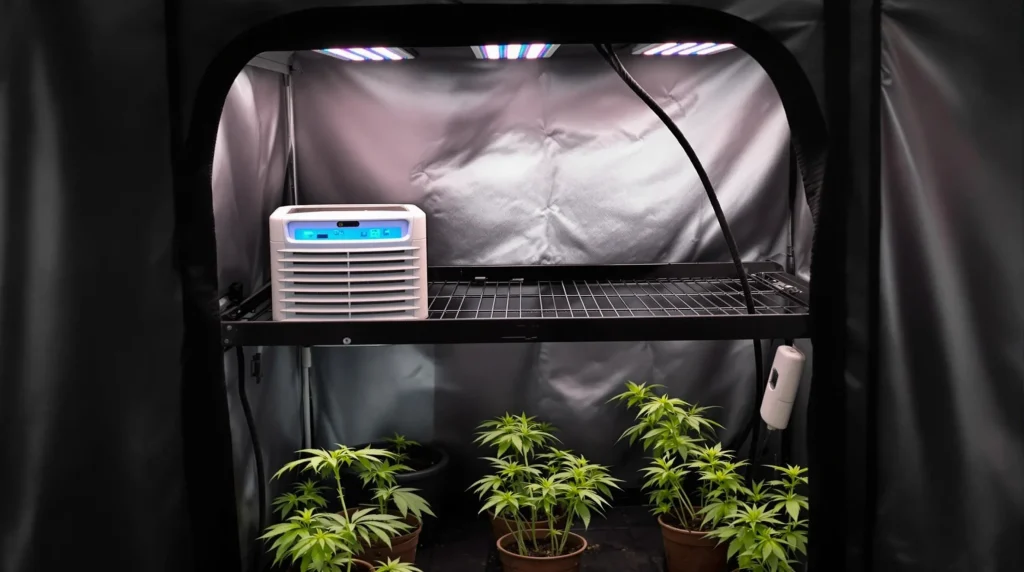
Choosing the Right Dehumidifier for Your Grow Room
Calculating the Size and Capacity You Need
Selecting the right dehumidifier starts with calculating your grow room’s size and moisture levels. Larger rooms with dense plant populations require higher-capacity models to maintain ideal humidity.
Most manufacturers provide specifications detailing the area a unit can cover. Match these figures to your grow room dimensions to ensure efficient performance without overworking the device.
Matching Dehumidifiers to Your Lighting Setup
Grow lights generate heat, which can increase humidity levels. When choosing a dehumidifier, consider the impact of your lighting system on the room’s environment. LED lights produce less heat compared to HID lights, which may reduce the workload on your dehumidifier. Adjusting your lighting and dehumidification strategies together ensures a balanced environment for your plants.
Comparing Budget-Friendly and Premium Options
Dehumidifiers come in a range of prices, from affordable models for beginners to premium units with advanced features. Budget-friendly options are ideal for small-scale growers, while premium models offer additional benefits like energy efficiency and smart technology.
Compare features, warranties, and customer reviews to find a dehumidifier that suits your needs and budget. Investing in a reliable device can save you time and money in the long run by preventing crop losses.
Maintaining Optimal Humidity Levels
Using Hygrometers to Monitor Grow Room Humidity
Hygrometers are essential tools for tracking humidity levels in your grow room. Place these devices at different heights and locations to get an accurate reading of the overall environment.
Many growers pair hygrometers with dehumidifiers to maintain consistent conditions. Digital hygrometers with alarms can alert you to sudden changes, allowing for immediate adjustments.
When to Adjust Dehumidifier Settings
Humidity requirements vary across cannabis growth stages. During the seedling stage, higher humidity levels (60-70%) are ideal, while flowering stages benefit from lower levels (40-50%) to prevent mold.
Adjust your dehumidifier settings as your plants progress through their lifecycle. Regular monitoring ensures your environment remains suitable for each stage of growth.
Pairing Dehumidifiers with Ventilation Systems
Combining dehumidifiers with ventilation systems enhances airflow and prevents moisture buildup. Exhaust fans help expel humid air, while intake fans bring in fresh, dry air to balance conditions.
This synergy between ventilation and dehumidification is crucial for larger grow rooms. It ensures even distribution of air and humidity control, promoting healthier plant growth.
When to Use a Cannabis Dehumidifier During the Grow Cycle
A cannabis dehumidifier plays a different role at each stage of plant growth. During early vegetative growth, it helps prevent excessive moisture buildup while still allowing higher humidity levels. As plants transition into flowering, dehumidification becomes critical to protect dense buds from mold and fungal diseases.
Proper timing and adjustment of a cannabis dehumidifier ensure optimal transpiration, nutrient uptake, and resin production. Consistent humidity control throughout the grow cycle directly contributes to healthier plants and higher-quality harvests.
Benefits of Using a Dehumidifier in Grow Rooms
Improved Plant Health and Yield
Maintaining the right humidity levels with a dehumidifier directly enhances plant health. By controlling moisture, plants can absorb nutrients more efficiently, leading to robust growth and vibrant foliage. This balance ensures that cannabis plants can photosynthesize effectively, fueling their development and maximizing potential yields. Dehumidifiers also reduce environmental stress, which can otherwise weaken plants and lower their overall quality.
In addition, a well-regulated grow room minimizes the chances of nutrient lockout or deficiencies caused by excessive humidity. These issues can hinder bud formation and compromise the cannabinoid and terpene profiles. With a dehumidifier in place, growers can achieve consistent results, producing dense, resin-coated buds that command higher value in the market.
Reduced Risk of Pests and Diseases
High humidity creates a perfect breeding ground for pests like spider mites and fungus gnats, as well as fungal diseases such as powdery mildew and botrytis. By eliminating excess moisture, dehumidifiers significantly lower these risks, saving growers from potential crop losses. A drier environment makes it difficult for pests to thrive, reducing the need for chemical interventions.
Moreover, diseases caused by high humidity can spread rapidly and devastate entire crops if left unchecked. Investing in a quality dehumidifier allows growers to maintain a clean, disease-free environment. This proactive measure not only protects the health of current plants but also establishes a safer space for future cultivation cycles.
Enhanced Control Over Environmental Conditions
Dehumidifiers provide growers with precise control over their grow room climate, a crucial aspect of successful cannabis cultivation. By setting and maintaining specific humidity levels, growers can tailor the environment to the needs of their plants at every stage of growth. This level of control ensures plants remain stress-free and perform optimally.
In commercial setups or larger operations, environmental consistency is vital for producing uniform results across multiple plants. A reliable dehumidifier allows for greater predictability, reducing variability in quality and yield. Combined with other tools like hygrometers and ventilation systems, dehumidifiers empower growers to create ideal conditions, setting the foundation for exceptional harvests.
Common Mistakes When Using Dehumidifiers
Over-drying the Grow Room
One of the most common mistakes growers make is over-drying the grow room. While controlling humidity is essential, excessively low humidity levels can stress plants, causing them to wilt and hindering their ability to photosynthesize effectively. This can result in slower growth, reduced yields, and diminished cannabinoid and terpene profiles.
To avoid over-drying, growers should monitor humidity levels consistently using a reliable hygrometer. Aim to maintain a balance that supports healthy transpiration and nutrient uptake, typically around 40-50% humidity during flowering and 60-70% during the vegetative phase. Adjust dehumidifier settings gradually to ensure optimal conditions.
Ignoring Airflow and Ventilation
Dehumidifiers alone cannot create the perfect environment if proper airflow and ventilation are overlooked. Stagnant air can lead to uneven humidity levels and create pockets of moisture, which increase the risk of mold and mildew. Without adequate circulation, the dehumidifier’s effectiveness is compromised, leaving parts of the grow room vulnerable to moisture-related issues.
Pairing dehumidifiers with exhaust fans and oscillating fans ensures consistent airflow throughout the space. Proper ventilation helps distribute dry air evenly, preventing moisture buildup on leaves and buds. This synergy between dehumidification and airflow is crucial for maintaining a healthy and productive grow room.
Choosing the Wrong Dehumidifier Size
Using a dehumidifier that is too small or too large for your grow room can result in inefficiencies and increased costs. An undersized dehumidifier will struggle to maintain the desired humidity levels, leading to overworked equipment and inconsistent environmental conditions. Conversely, an oversized unit may dry the air too quickly, making it harder to fine-tune the settings.
To choose the right size, calculate the grow room’s total cubic footage and match it with the dehumidifier’s capacity. Most manufacturers provide clear guidelines on the coverage area for their products. Selecting the appropriate size ensures energy efficiency and consistent performance, saving both time and money in the long run.
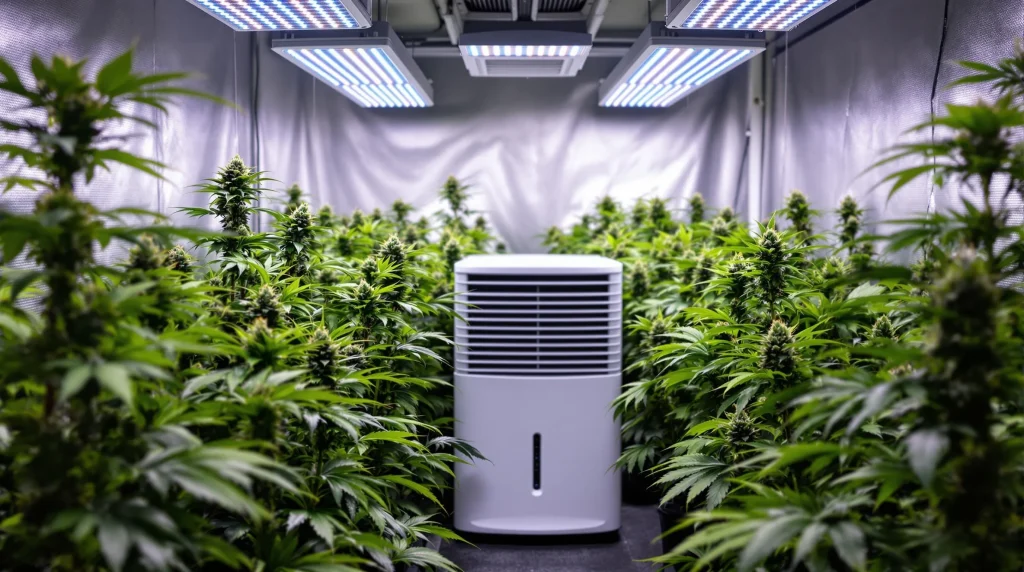
FAQs About Grow Room Dehumidifiers
How do I determine the right dehumidifier size for my grow room?
To determine the correct size, calculate your grow room’s dimensions (length × width × height) to find its cubic footage. Consider the number of plants, as they contribute to overall moisture levels through transpiration. Match this information with the dehumidifier’s capacity, usually measured in pints per day. For larger grow rooms, you may need multiple units to maintain consistent conditions. Many manufacturers include recommended coverage areas in their product descriptions, making it easier to choose the right model.
Can I use a regular home dehumidifier in my grow room?
While a home dehumidifier can be used in small grow spaces, specialized grow room dehumidifiers are better suited for cultivation needs. Grow-specific models are designed to handle higher humidity levels and operate continuously in demanding environments. They often include features like automatic humidity controls, robust filtration systems, and the ability to connect to external drainage for continuous operation. Using a standard home unit may suffice temporarily, but upgrading to a grow-specific model is recommended for long-term efficiency and reliability.
What’s the ideal humidity level for cannabis during flowering?
During the flowering stage, maintaining a humidity level of 40-50% is ideal. Lower humidity reduces the risk of mold and mildew forming on the dense buds while promoting healthy resin production. Use a hygrometer to monitor conditions closely and adjust your dehumidifier settings as needed. Consistent humidity control during flowering ensures optimal bud quality, potency, and yield.
What’s the Best Dehumidifier for a Small Grow Tent?
Units with built-in humidistats and quiet operation are particularly valuable in compact setups. These features allow growers to fine-tune humidity levels precisely while maintaining a discreet and efficient grow environment.

